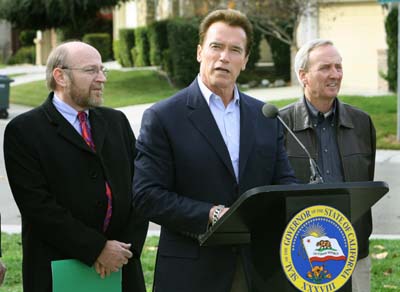City says new research reveals a clearer picture of the timeline
involved in the project
Hollister’s sewer project, originally slated to be operational
by December 2007, now looks like it won’t be functional any time
before mid-2008 or early 2009, according to a memo circulated at a
regional water planning panel.
The estimates will be unwelcome news to developers and
builders
– as well as though who make a living in the building trades –
who were counting on having the state-imposed sewer moratorium
lifted next year so they could break ground on an estimated 1,200
homes already approved by the city.
City says new research reveals a clearer picture of the timeline involved in the project
Hollister’s sewer project, originally slated to be operational by December 2007, now looks like it won’t be functional any time before mid-2008 or early 2009, according to a memo circulated at a regional water planning panel.
The estimates will be unwelcome news to developers and builders – as well as though who make a living in the building trades – who were counting on having the state-imposed sewer moratorium lifted next year so they could break ground on an estimated 1,200 homes already approved by the city.
The revised schedule was presented last month to the Governance Committee for the Hollister Urban Area Water and Wastewater Plan – a group made up of representatives from the city of Hollister, San Benito County and the San Benito County Water District.
New cost estimates also have been submitted for the city’s sewage treatment plant and recycled water program, which indicate the new facility would cost as much as $148 million.
Though construction on the plant will begin later this year as previously planned, recent research by the city details a clearer picture of just how much time it will take to build a new sewage treatment plant, according to City Manager Clint Quilter. Comparable sewage treatment plants being built in other areas take between 18 and 30 months to build, according to Quilter. The average construction time is 22 months, he said.
The timeline comes from a Constructability Review put together by experts in the field, according to San Benito County Water District Manager John Gregg. In 2002, the city dumped 15 million gallons of partially treated wastewater into the San Benito River. The Central Coast Regional Water Quality Control Board slapped a moratorium on new sewer hook-ups and gave Hollister until Oct. 15 of 2005 to build a new sewage treatment plant.
In October, the city averted $200,000 in fines when, at the request of Quilter, the water-quality board gave the city more time to construct a new sewage treatment plant. At the same time that it granted the extension, the water board gave the city a series of revised deadlines. Water board officials were not available to comment on the latest estimates by press time.
The city met its first deadline in December when it submitted a long-term wastewater plan. The other revised deadlines include awarding a construction contract for a new treatment plant by late 2006 and drafting a disposal plan for treated wastewater by March 2007. Each deadline missed will result in more than $66,000 in fines being levied against the city.
The latest cost estimate puts the cost of the sewage treatment plant, reservoir and spray fields for disposal at between $109 and $120 million. The second phase, which includes further treatment of wastewater so it can be recycled and used for agriculture will cost between $19 million and $28 million. However, the second phase of the project likely won’t begin until after the new sewage treatment plant is built, Quilter said.
The treatment plant is the immediate need, since once it’s finished, the water-quality board will lift the moratorium on sewer hook-ups.
The Hollister Urban Area Water and Wastewater Governance Committee is working to find ways to finance the project, but the cost will largely fall onto the backs of new developers.
About 46 percent of the costs of the treatment plant will be covered by connection fees paid when new buildings start using the city’s sewer system, leaving 54 percent to be paid for by other means (about $13 million of the 54 percent will come from the Hollister Redevelopment Agency).
It has yet to be determined whether the city will bear the cost alone or have help from other jurisdictions represented on the Governance Committee, Quilter said. One of the financing options that will be considered is the sale of government revenue bonds. Phase 2, the recycled water component of the project, may be financed with state and federal funds, and fees from those who use the recycled water in agriculture, according to a long-term wastewater plan drafted by the city in December.








